Connect With Us
Blogs
vendor
3 Ways to Rehabilitate Fallen Arches

Rehabilitate Fallen ArchesWhat is fallen arches? What are the main causes of these fallen arches? How can you determine if you have fallen arches? A fallen arch is a form of your feet that causes discomfort and severe pain. Normally, a person with fallen arches can see the arches underneath the foot.
The arches are created by tendons on your feet when they pull. Flat feet or fallen arches are medically called as the per planus that usually occur when your ligaments, small bones and tendons on the bottom of your feet can’t properly support your body, then subsequently collapse.
Thousands of people suffer from sole pains and various aches each year, and the top offender is the flat feet or fallen arches. While this fallen arches concept is something that you’ve heard before, it’s necessary to fully understand it and most importantly if how fallen arches will affect your mind, peace, and orthotic health. Fallen arches or flat feet have common causes and these include; congenital abnormality, torn/stretched tendons, broken bones, nerve conditions and rheumatoid arthritis.
1.) Understanding the type of Fallen Arches
Fallen arches are usually normal, especially to children. It is normal for young ones to have fallen arches at age of five years or sometimes ten years as they take time to the tendons, ligaments and bones on the side of the feet to form the supportive arches. When you notice that way in your kids, don’t panic, especially if it doesn’t cause any pain and problems when they’re walking.
But, they will definitely grow out, so it’s needed to be fix immediately. One of the best way to rehabilitate your flat feet is do a flat surface exam to figure out fallen arches. Moisten the feet then step into dry surface which shows the footprints. If the whole surface of the feet can be distinguished from the footprints, then your child has fallen arches. Whether it occur to children or adult, it’s normal to feel severe pain.
2.) Wear supportive shoes
No matter what type of fallen arches you have, wearing supportive shoes is one of the best ways to rehabilitate your flat feet. Wearing more shoes with arch support can provide benefits and can possibly give total relief to your leg, back or feet symptoms. Look for a comfortable athletic and walking shoes with good arch support firm heel counters, roomy toe case and flexible sole. Wearing more supportive shoes can really help to support your arches and decrease the Achilles and posterior tibial tension.
3.) Consult your Podiatrist
Self-care treatment is good and can reduce the possible risks of flat feet, but the most effective way to rehabilitate your fallen arches is to consult podiatrists. They are more knowledgeable and know how to effectively treat your fallen arches. A podiatrist can specialize the disease that you have in your feet and can provide you the correct treatment. They can do examination and x-rays to determine what type of fallen arches that you have and recommend you the right palliative like orthotic therapy, form of flat feet surgery or casting and bracing of your feet.
The Root Cause of Heel Pain
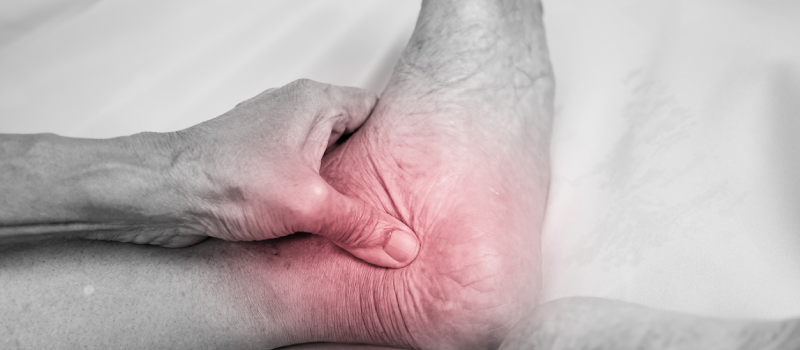
Heel PainOne of the most important parts of our body is our feet. Our feet are used in order for us to stand and move. It helps a lot in our everyday living. We use it for walking, running, jogging, jumping, and many more. Its main functions are to assist ambulation, weight transmission, and balance posture. Feet have many parts. One of those is the heels. The heel is located at the posterior end of the foot. It is very important part of one’s foot. It is founded on the projection of one bone, the heel bone or the calcaneus behind the articulation of the lower leg of the bones.
In our everyday living, we used our feet. Therefore, we also used our heels. There are also moments in our life that if we felt tired of walking or running, we experience pain in some parts of our feet. We experienced it at the end of the day. Oftentimes, we experience heel pain. But the question is what heel pain is? What is the root cause of heel pain?
What is the root cause of heel pain?
Nowadays, people are very busy in their everyday work. They went to their respective workplace wearing different kinds of shoes that are appropriate for their jobs. A lot of man wear their regular shoes while women most of the time wear their high heel shoes. It is important to wear shoes that is comfortable for our feet to avoid heel pain. One of the reason why we experience heel pain is because of our wrong choose of our shoes that we usually wear. But that is not only the cause of heel pain, in the popular cases, it has many causes, they are the following:
Heel Bursitis – it is the inflammation of the back part of the heel. It is caused by landing hardly on the heels. Sometimes it is caused by the pressure coming from the footwear. The pain is usually felt at the back of the heel or inside the heel.
Chronic Inflammation of the heel pad – it is caused by weighty footsteps or the pad of the heel becomes too thin.
Severs Disease – It is very common to child or teenage athletes. It is caused by repetitive micro trauma of the heel bone’s growth plates.
Heel Bumps – it is very common cause of heel pain among teenager most especially for the ladies who wear high heels. If the heel bone is not yet completely mature it results to the formation of too much bone.
Stress Fracture – It is common for the athletes. The main commonly cause of this is sports, energetic exercise, and heavy kinds of work.
Despite of the above causes, there is what we call the major cause of heel pain. The major cause of heel pain is the plantar fasciitis. Plantar fasciitis is caused usually by biomechanical inequality which results to tension beside the plantar fascia. It is oftentimes referred by medical group as “heel spur syndrome”. Plantar fasciitis happen if plantar fascia is turn to be overstretched, ruptured, or torn. It happens to both men and women. But, it is usually common to women.
Fix the Root Cause of Heel Pain
Heel pain is basically a common problem of the foot. It may not be a serious condition but it really interrupts us in our different doings. It may have a random of causes but we can actually avoid it by taking proper care of our feet, wearing supportive shoes, maintaining healthy weight, increase the level of activity gradually, and of course take enough rest.
It feels so good if we don’t have heel pain, so we must follow the healthy tips on how to avoid this kind of pain. A healthy lifestyle plus proper discipline is our shield to fight heel pain.
4 Tips for Preventing Foot Injuries While Running
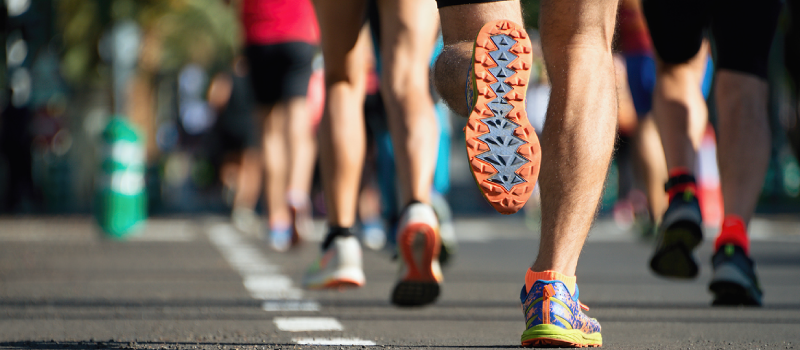
Foot Injuries While RunningRunners can become injured while running. They will recover, but they’re usually advised to avoid doing strenuous activities to allow their body to heal. Injury prevents them from participating in running and other activities. These injuries, however, can be prevented. Here are some tips for preventing foot injuries while running.
Don’t forget to warm up
Doing a slow jog for 2 to 3 minutes or lightly stretching your body will help warm up the muscles.
Condition your muscles
Slowly increase the amount of time you spend on the activity over a period of weeks to build your mobility and muscle strength. You can participate in various activities to build your muscles.
Avoid overdoing things
It is fine to be fired up about running, but just don’t overdo things. A lot of runners immediately want to run an extra mile and train hard as they want to be at par with more advanced runners. Subjecting the body to physical action without the right pacing is not exactly the best idea. You should increase your running mileage by around ten percent every week and nothing more. While it is fine to get out of your comfort zone, running should be approached with a disciplined mindset. The fastest way to achieve your goals is to train smartly. Overdoing things will only lead to injuries.
Wear the right pair of shoes
Running doesn’t require a lot of equipment, but you need to wear the right pair of shoes to avoid injuries. Runners often sustain an injury due to using the wrong running shoes. Buying a brand new pair is not the only thing that matters. Wearing something that’s new and will last for a long time is important, but what’s more important is to get a pair of running shoes that fits your exact needs.
If your foot has a collapsed medial longitudinal arch, you should wear a pair of shoes with enough arch support. It should also provide extra stability to your feet. In case you are prone to sustaining ankle sprains, you’d need a pair of shoes that offers more support and stability. Your shoes should provide the right level of cushioning to avoid experiencing pain because of repeated impact on the pavement or other hard surfaces. A pair of high performance running shoes is usually designed for the terrain that the footwear is made to be used on. This only means that you should determine where you are planning to train and run as the choice of running shoes depends a lot on your running environment.
Another important thing to keep in mind is to train in a holistic manner. Most runners focus on developing the muscles of their thighs and legs in order for their muscles to become used to the requirements of running, but they forget about balance training. The training programs of a marathoner and a sprinter are different, but both of them need to train for balance. Good balance can help you avoid foot injuries while running.
What Are The Top 3 Mobility Devices For A Broken Ankle?
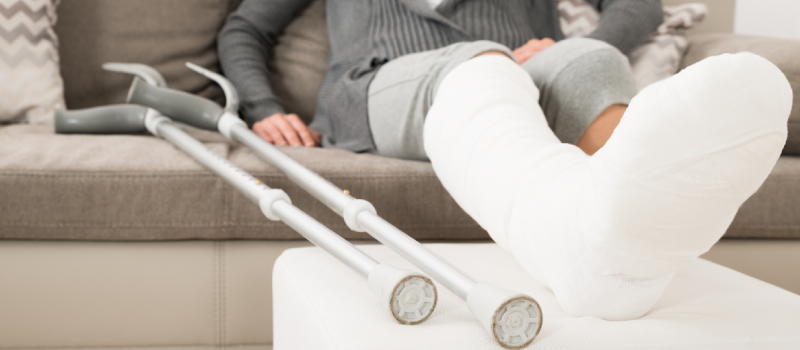
Broken Ankle Surgery Long Beach
Knee Scooters Vs Seated Scooter
What Are The Top 3 Mobility Devices For A Broken Ankle?
It is natural that in order to complete a certain task, you must be able to move freely and comfortably. Meanwhile, you cannot feel at ease if you are suffering from a broken ankle. Fortunately, you do not have to worry since there is an alternative and more innovative solution for that. In today’s digital age, technology provides the best mobility devices that can help people who have a broken ankle.
To mention a few, the following are some of the top mobility devices for a broken ankle.
Knee Scooters
With the help of this innovative technology, people who suffer from broken ankle can now have the chance to move without limitations in their daily living. This can help you feel more comfortable while doing your various activities in your daily lifestyle. The knee scooter is considered as one of the best broken ankle mobility devices in the market today.
For many years, the knee scooter is one of the most reliable and proven broken ankle mobility devices that most look for in the market. In addition to this, it also provides a maximum support and comfort to the user.
The Seated Scooter
Suffering from a broken ankle can be quite stressful and frustrating. However, you can stop worrying about this injury since you can now feel more comfortable with the seated scooter. After a foot surgery, it is a fact that your doctor will recommend you to rest. Definitely, this mobility device is the perfect one for you, thus it will allow you to stay in a sitting position where you can rest and relax. In addition to this, you can bring it wherever you want, so you can also take a relaxing tour while resting.
For sure, you will love using this product as it comes in an elegant design and color that perfectly suits your taste, high standards, personality and most of all, your hard earned budget. One of its amazing features is that it comes in a useful basket wherein you can store your valuable items and files in your daily activities or work. Another good thing about this product is that you can use the product as a chair wherein you can place your leg in a comfortable manner when you are not scooting.
iWalk2.0
With the help of the latter device, you can now exercise regularly while waiting for your recovery. The iWalk 2.0 has many amazing features. It can be availed in a very affordable cost and can be used in a painless manner. It is safe and can allow the user to climb up in stairs in a safe and comfortable way.
Move without limits with these excellent broken mobility devices
With the help of the above mentioned broken ankle mobility devices, you can now have more chances of enjoying your life in the best way as possible. You deserve to move freely and comfortably every moment of your life. These mobility devices can help you achieve fast recovery from a broken ankle caused by an accident.
Should I See a Podiatrist for my Foot Injury?

Podiatry is the branch of medical studies which deals with the diagnosis, treatment, rehab as well as prevention of feet and lower limbs disorders. The medical specialist of this specific area is known as a podiatrist. Podiatrists have obtained extensive learning and training on this particular field of medicine. They frequently work closely with other medical care experts like massage therapists and physiotherapists to help patients who need assistance.
Call Podiatrist Long Beach To Help You with Food Issues
Through supervision and know-how of a podiatrist Long Beach, it’s possible to enhance foot function and develop lower leg mobility. A podiatric medical tool might be prescribed like orthotics. There are various kinds of orthotics it depends on the needs of the patients. Sportsmen, seniors, adults as well as kids can wear this device. It us used to support the foot’s arch, avoid muscle and joint pains, lessen the risk of injuries while doing strenuous activities and bring back proper alignment. This is also utilized to cure corns, ulceration, calluses through redistributing the pressure of your body weight on your feet.
Should You See a Podiatrist?
Sportsmen and those who are frequently engaged in stern physical activities are normally the ones prone to injuries. Needless to say, when you have injured a foot or sprained an ankle, podiatrist Long Beach is the best person to provide you with an accurate diagnosis and treatment. Diabetic people are also at risk of getting injuries and developing infections so they have to be very careful with their feet. Because of poor blood glucose control, there can be reduced the supply of blood to your feet that may result in cramps, wounds and numbness and wounds which are slow to heal.
As a result, so as to avoid serious complications, it’s advisable to consult a reliable podiatrist Long Beach for a complete and painless check up of your feet to know whether you are at risk. Don’t delay the trip to the clinic most essentially when you experience some of the signs such as numbness, burning pains in feet and legs and tingling sensation. For a lot of people, feet are the most ignored part of their bodies. A lot of people don’t pay much attention to their feet that could enhance the risk of injury or developing a disorder. Since feet are important to mobility and support the whole body, it’s extremely essential to good care of them as best as you can.
It’s interesting to know that podiatry isn’t just restricted to the cure or treatment of broken bones and sprains. A podiatric Long Beans is also specialized in treating other foot issues like ingrown, fungal nails, cracked heels, toenails, calluses and corns, deformities, bunions, etc. It is highly recommended that you see a reliable podiatrist Long Beach once you feel any discomfort in when you notice the least symptom of trouble in your feet. Consultation with a podiatric Long Beach will provide you the chance to get a complete assessment of your lower limbs so that the needed treatment can be implemented right away.
3 Services Performed By a Foot Specialist

Your feet are extremely essential. You are on them every day. On the other hand, even if you use them so often, a lot of people take foot care for granted. Thus, with regards to proper care a lot of people take a reactive rather than proactive method to caring for them. And, the truth is that failure to properly care for your feet could also result in a whole host of other problems with your body like spine, back and neck issues. Foot specialist Long Beach is committed and dedicated to promoting foot health by means of their utmost quality of patient care, treatment as well as education. Foot specialist Long Beach offers many types of services which take account of the following such as:
Bunion Correction
This is a common foot issue in which irregular bony bumps develop at the joint of your big toe, which causes the join to inflame outward and become aching. Many surgeries might be done to cure bunions. Soft tissue release and osteotomy are among the most used treatments. Other surgical procedures performed by foot specialist Long Beach include capsular arthroplasty or tarsometatarsal or lapidus.
Wearing tight shoes is the main cause of bunions. These aren’t hereditary; on the other hand they do tend to run in your loved ones, basically due to the defective and broken down foot structure. Flat feet, foot injuries, neuromuscular issues, as well as pronated feet could add to the formation of bunions. It’s estimated that this foot illness occurs in 33% of the population in various countries in the West.
Neuroma
This is a painful inflammation of a nerve in the ball of your foot. Burning, sporadic pain, tingling as well as a lack of sensation of toes happen when one or more nerve is strained between the overlying ligament and the metatarsal. Morton’s neuroma is the most common type of neuroma that happens between the 3rd and 4th toes. Once the nerve is enduringly harmed, it might need to be surgically eliminated.
Foot Surgery
A lot of foot injuries need surgery to ease persistent pain, restore function to damaged or weakened joints in your foot and correct deformity. Foot surgery is considered effective and safe. On the other hand, not each patient who undergone surgery will experience a good and positive result. Once the patient keeps on experiencing from issues related to foot injury like foot debilitating soreness, foot revision surgery might be needed. In general, this kind of surgery takes time to complete than the usual foot surgery. It is also challenging since there’s a high risk of complications.
Pain doesn’t need to be part of our life. A lot of people suffer pointlessly with foot ache or a damaged gait due to the unrepaired sports injuries, accidents or inherited defects. In case, you are living in this kind of pain, call foot specialist Long Beach to know what could be done to ease the pain and bring back the quality of your life.
Do I need to see a doctor to treat athletes foot?
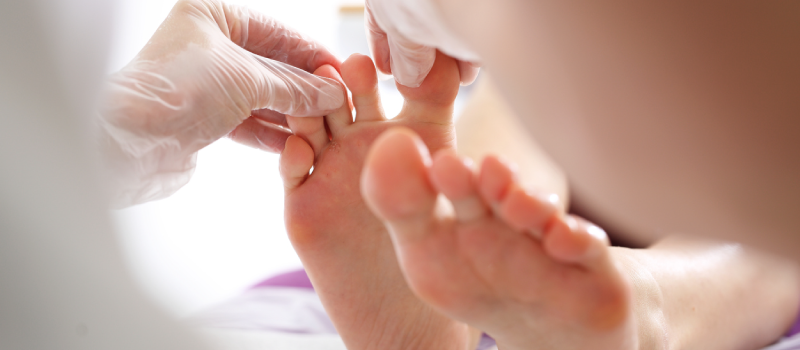
Athlete’s foot is a fungal infection and is contagious as it affects the skin and spreads to the hands and toenails. It is actually called as athlete’s foot as it is commonly observed in most athletes. Although it may not be serious, it can sometimes be really difficult to cure. If ever you have a poor immune system or diabetes and you have noticed you have an athlete’s foot, you need to talk to your doctor immediately.
Especially if the infection still not goes away, the attending physician may still prescribe for stronger and better anti-fungal medications in tablet forms. With an effective treatment procedure, athlete’s foot will last only for weeks or days. Through an anti-fungal medication, the fungi will be killed that bring the infection. The anti-fungal medication will kill the fungi causing the infection and will usually be available in different forms like:
tablets
powders
liquids
sprays
creams
In addition to that, you need to see a doctor to treat athlete’s foot if you have the following:
Blisters on the Feet
Feet with Severe Scaling, Cracking and Peeling
Signs of Bacterial Infection like Pus Discharge, Red streaks that extend from the affected area, increased pain, heat, tenderness, swelling and redness
Fever that reaches 100.4 degree Fahrenheit or higher than that
Infections starts to appear and to spread
Diseases linked with poor circulation or diabetes and you have an athlete’s foot. Those who have diabetes will be at a higher risk of severe bacterial infection of the leg and foot.
Symptoms still do not improve after treatment of two weeks.
In this regard, watchful waiting will be a time wherein you and your doctor will observe the condition or the symptoms. There will be no medical treatment to be used. The athlete’s foot may as well be treated at home.
But remember that a severe, recurrent and persistent infection will need to be evaluated by a physician or a doctor. If ever the symptoms still appear, you need to make use of a non-prescription product. If ever the symptoms have still not improved after two weeks of the treatment, the more that you need to contact your doctor.
Health professionals or health experts that will be there ready to treat or diagnose your condition include the following:
podiatrists
dermatologists
family medicine doctors
nurse practitioners
physician assistants
Never leave this condition not treated as the infection may spread to other areas of the body like the toenails. This may as well cause infection on the palms of the hands. Actually, the fungus which causes athlete’s foot grows on the surface of the skin. If there will also be cracks on the skin, these will usually enter the body and will spread to those exposed tissues.
Prevent the infection from spreading to other parts of your body and call the athlete’s foot doctor immediately!
Treatment Options for Plantar Fasciitis
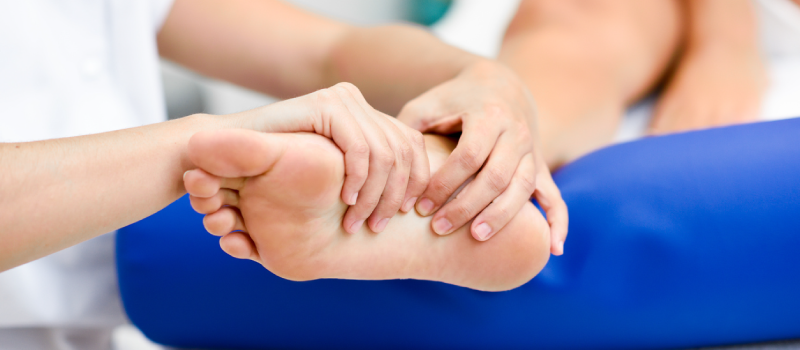
Generally, this condition is a self-limited condition. Nevertheless, the symptoms commonly resolve more quickly when the interval between the symptoms onset and treatment onset is shorter. There are many treatment options that exist and some are as follows:
Shoes
Changing your shoes to proper fitting will be a great help in some sufferers. Some people are wearing shoes that are too small, and this may result to exacerbating many kinds of foot plan. Patients most commonly find that wearing shoes with well-cushioned and thicker midsoles commonly made of a material such s ethylene vinyl acetate with high density can decrease the pain that is associated with long hours of standing or walking.
Night splints
This treatment option is commonly designed to keep your ankle in a neutral position overnight. Most people naturally sleep flexing the feet plantar, which is a position that causes the plant fascia to be in a foreshortened position. This treatment will enable passive stretching of the calf and plantar fascia while sleeping.
Iontophoresis
It is a treatment option that used galvanic current stimulation unit with low voltage only to provide electric impulses for driving the corticosteroids to the structures of soft tissue. Using this treatment will provide significant improvement in 2 weeks. However, it is costly and time consuming, and it should be administered by a physical therapists or athletic training for at least 203x a week.
Stretching and strengthening
These play a significant role in treatment plant fasciitis, correcting the functional risk factors like weakness of the intrinsic foot muscles and tightness of the gastrocsoleus complex. It is of great importance to increase the flexibility of your calf muscles. Stretching techniques include stair stretches and wall stretches.
Anti-inflammatory agents
These include iontophoresis, ice, cortisone injections, and NSAIDs. Ice can be applied in your treatment through ice massage, ice pack, or ice bath.
Corticosteroid injections
It has the greatest benefit when administered early on the disease course. However, due to the associated risks, they are most commonly reserved for recalcitrant cases. Steroids can be injected via medical approaches with or without ultrasound guidance or through the plantar with 70% of success rate.
Arch supports and orthotics
Patients who have low arches have decreased the ability of absorbing the forced that are generated by the foot strike’s impact. The most commonly used mechanical corrections include over-the-counter arch support, arch taping, and custom orthotics.
Surgery
In cases that are not responding to any conservative treatment, you may opt for a surgical release of the plantar fascia. The surgery of plantar fasciotomy may be performed using endoscopic, pen, or radiofrequency lesioning techniques. All in all, the success rate of this kind of treatment include heel hypoesthesia, longitudinal arch flattening, and potential complications with the plantar fascia rupture.
Understanding the different treatment options that you can take for plantar fasciitis will be helpful in getting the right treatment for you, and determining the severity of your condition.
Does an Achilles Tendon Rupture Always Require Surgery?
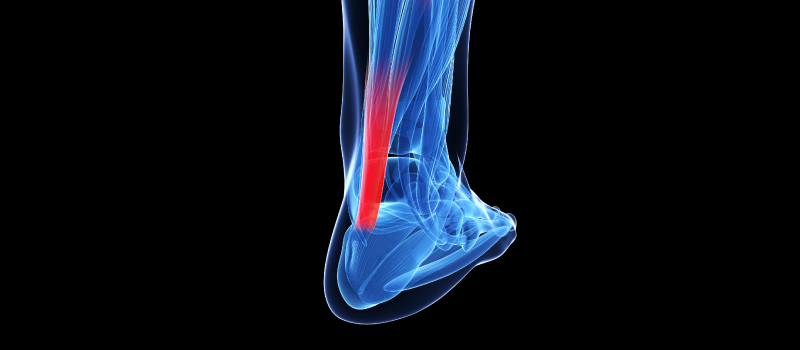
Achilles Doctor Long Beach
As soon as your physician diagnosed that you have an Achilles tendon rupture, you will be presented to take surgery. However, it does not always require to be treated with surgery; there are other options to treating and repairing your Achilles tendon injury. You will be provided with different options based on the complexity and severity of your rupture, on your budget, and your preference.
Non-surgical Treatment
The treatment includes casting the foot with your toes pointed down. You can also opt for recasting. Ever week, a new cast will be applied and this will gradually decrease the amount of flexion that points down in your ankle, enabling your Achilles tendon to heal while increase the stretch in your tendon gradually. While you may appreciate the value of non-invasive procedures, you need to know that the recovery rates from this treatment option are not very encouraging. The non-operative care has demonstrated a re-rupturing rata from 10% to 30% as compared to the 3% to 5% re-rupturing rate in surgical procedures.
Surgical Treatment
There are 2 kinds of surgeries for treating Achilles tendon rupture.
Open surgery: Open surgery involved one large incision on the back of your leg, using a tendon transfer from your big toe or sewing cadaver tendon o the remaining parts of your own Achilles tendon in order to repair it and be strengthened.
Percutaneous Achilles Repair System (PARS) surgery: The PARS surgery is a new technique, wherein the surgeon will be repairing your torn Achilles tendon with a smaller incision. Through this surgery, the tendon that has been damaged will not be removed. Rather, the damaged tendons will be used for making the repair. This procedure creates a 2-cm horizontal incision that is located in around 4 to 6 cm above the heel and then insert the PARS device up. This surgery is made possible with a special medical device with 4 prongs – 2 going inside the leg to hold the tendon, and the other 2 going outside the leg.
Because Achilles tendon ruptures are very common, surgeons are consistently coming up with new and innovative surgical procedures to more effectively and successfully repair the Achilles tendon rupture.
Risks of Achilles Tendon Rupture Surgery
While surgery proved to have more positive results, it is not without any risks, which you need to be aware about. The factor that you need to know before deciding as to which Achilles tendon repair and treatment you should choose in surgical treatment include:
Possible nerve damage
Decrease in the range of motion of your Achilles tendon, which may require you to go with rehabilitation in order to get back to your full range of motion.
Normal complication of anesthesia and surgery
Risk of repeat Achilles tendon rupture, with the risk of around 3% to 4%.
Skin infection at the incision site
Loss of strength in the healed tendon
After going either type of surgery, you will very likely to wear a walking boot or a cast for around 6-12 weeks.
What Is Typical Recovery Time For A Jones Fracture?

A Jones fracture is an injury at the base of the 5th foot metatarsal bone. Symptoms include swelling and pain at the injured area. Sufferers also find it hard to walk. A general diagnostic X-ray is needed to confirm that one is really suffering from a Jones fracture. The X-ray must be taken from all views – lateral, anteroposterior and oblique.
Jones fractures usually happen on the intermetatarsal joint. This injury is also sometimes confused with other bone fractures. If the injury happened on the tarsometarsal joint, it’s an avulsion fracture. These fractures are usually, but incorrectly diagnosed as apophysis. There are some signs that differentiate a Jones fracture from apophysis such as the lucent line’s angle and the lack of fractured edges. In apophysis, the metatarsal axis is parallel. In a Jones fracture, it is 90⁰.
A Jones fracture can be treated, but proper diagnosis and treatment are needed to ensure the successful treatment of the injury.
Treatment and Recovery Time for a Jones Fracture
Treatment and recovery time for a Jones fracture depend on the severity of the injury. A walking boot, splint or cast can be used for 1 or 2 months to correct a minor fracture. At this point, you should not put weight or exert any pressure on the affected foot until allowed by the doctor. A splint or a cast has a success rate of 75%.
Specialized treatment methods are needed for acute fractures. A figure 8 monofilament K wire may be placed on the fractured bone. A dynamic compression plate may also be placed on the strained part of the fracture. If the fracture cannot be treated using these methods, fixing it from the inside might be the only solution. The bones will be joined together using cortical or cancellated screws and bone grafts may be needed to speed up the healing process. Taking regular doses of Vitamin D and calcium can also speed up the healing of the injury.
Recovery From Jones Fracture Surgery
In some situations, surgery is required. For instance, athletes suffering from a Jones fracture can benefit from undergoing surgery as it can shorten the lengthy healing period. However, it is still best to discuss your treatment options with your doctor before undergoing any surgery.
Failure to unite the bones even after treatment can cause a chronic condition. This can be due to different reasons. One of these is the fracture occurring at an area that doesn’t get enough blood supply, reducing the chances of a quick and successful healing process. The muscles and tendons in the fractured area may also pull the injured bones apart, prolonging or preventing the injury from healing. Your doctor may recommend staying in a cast for a longer period of time. When this happens, recovery time for a Jones fracture could go up to twenty weeks.
If you are injured, you should visit your doctor right away. The sooner you manage your condition, the faster you’ll get rid of it and live a pain-free life.

